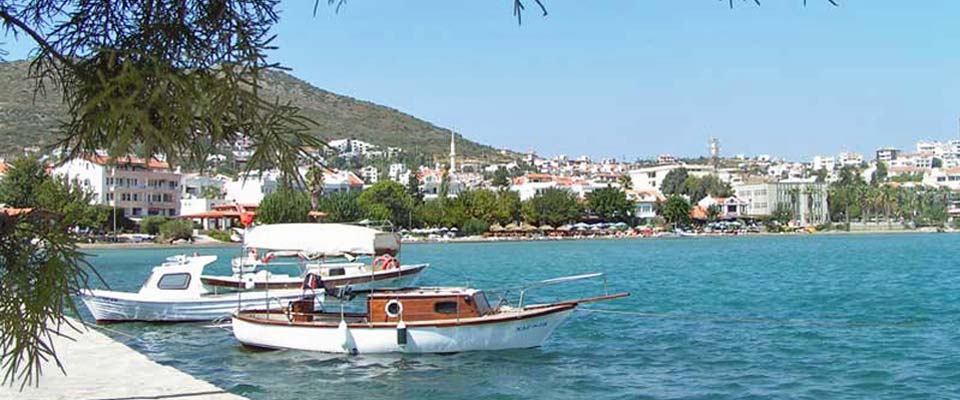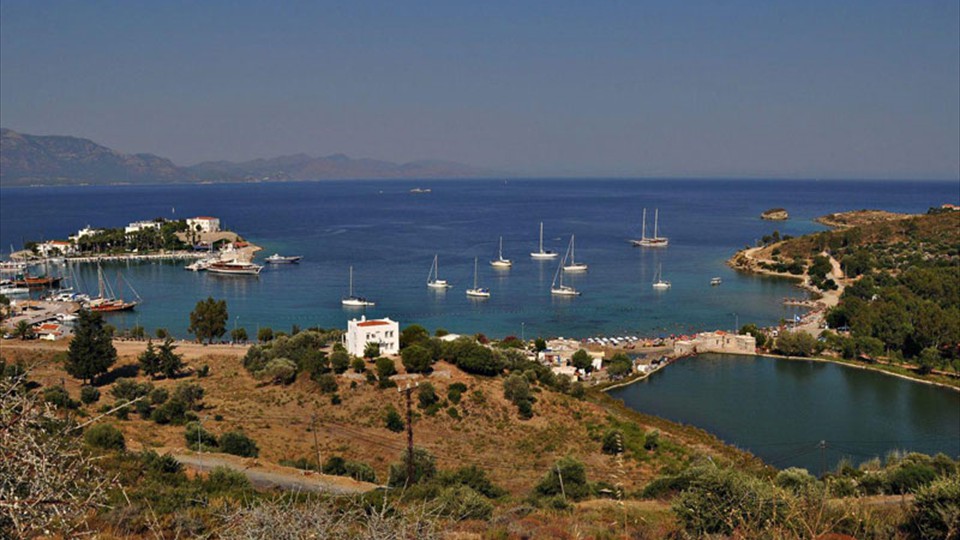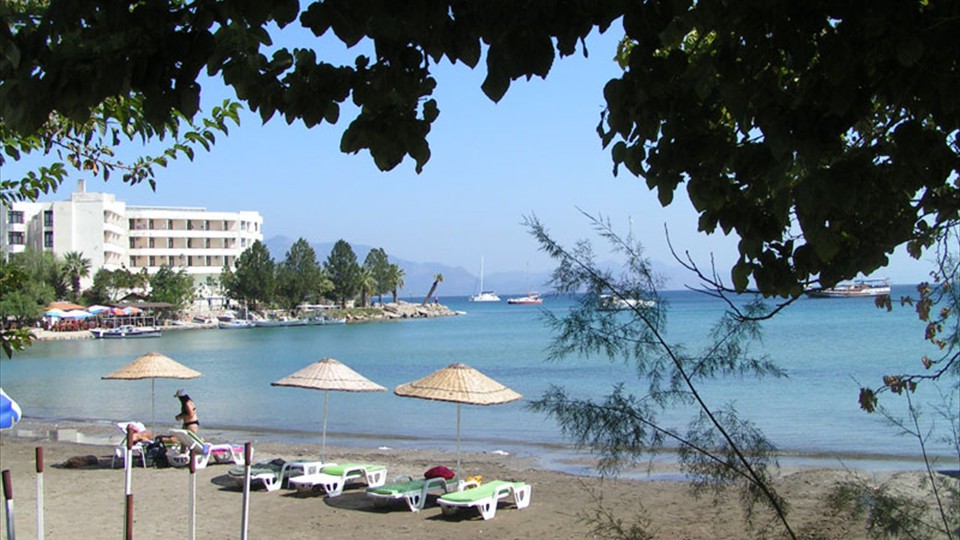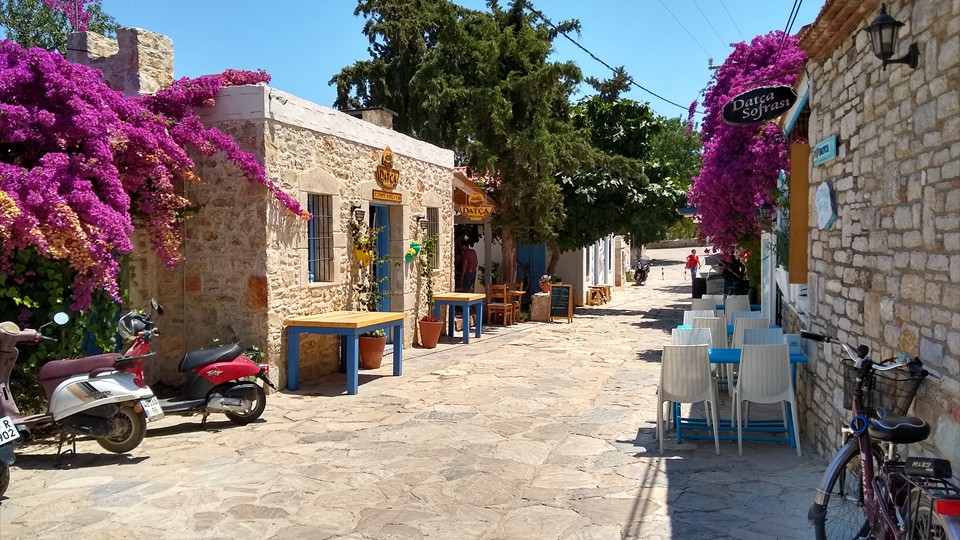Datça

Datça (population ~8,000) is a town situated half way down the peninsula which has the same name as both the district and the town. The Datça Peninsula is a long and narrow strip of land with small bays and coves facing both south and north all along its 100 km (or 62 mile) length. Its location is unique as to the north of the peninsula is the Aegean Sea and to the south sits the Mediterranean Sea. From the peninsula you have a panoramic view of the Greek islands of Kos, Simi and Rhodes. There are a number of examples of traditional windmills along the peninsula and in the town itself. The old town (Eski Datça) about 1km outside the modern centre is well worth a visit for its traditional architecture, narrow lanes and craft shops.
At the extreme end of the western tip of the district and the peninsula is a village called Tekir which is the location of the ancient city of Knidos. There is still debate on whether or not this location was the original site of the ancient city as a number of sources claim that until the mid-4th century BC. Knidos was halfway along the peninsula closer to the present-day district centre. On the western end of the peninsula lie the remains of the Doric harbor town of Knidos. In antiquity ships had to wait there for a favorable winds so the small harbor was often packed with ships. One of these ships was the one that brought Paul from Palestine to Rome. Parts of a market square, a necropolis, one town wall and two theatres have been preserved as well as the foundation of a round temple which housed the statue of Aphrodite of Knidos attracting visitors from the entire Roman Empire. You can take the boat that leaves in the morning from Datça and returns there at the end of the afternoon. The peninsula's eastern end is marked by the fjord-like indentation of Bencik Cove, 1.5 km in length, at the end of which the narrow isthmus where it joins the mainland is found. This point is a natural curiosity which offers a wide view of the Gulf of Gökova in the north and the Gulf of Hisarönü in the south and is called Balıkaşıran - which literally means 'the place where fish may leap across'.
Datça town is located approximately 65 km from Marmaris - about two hours' drive from Turunç. In recent years, the modern town has undergone something of a transformation and is very pleasant to explore. At night many of the restaurants set out tables on the beach so you can dine and relax right by the sea. Despite this, Datça remains relatively unaffected by high levels of foreign tourism largely because there is no airport easily accessible. Kumluk is a small, gently sloping sandy beach, in the centre of Datça: it's suitable for children, and has a wide choice of cafes and restaurants. Taslik beach is also centrally located just 200 metres further on from Kumluk beach. It’s a pebble beach (taslik means ‘pebbles’). The unique feature of this beach is its natural hot water spring, which is fed by water which comes out from the bottom of the mountains. The spring is in a beautiful Mediterranean setting, and it’s about 100 metres in diameter and 1.5–2 metres deep. The water itself is around 40DegC and contains dissolved minerals which are claimed to cure many ailments.
 If you are visiting Datça independently, by car - there
are a couple of places on the outskirts of the town that
are worth a short visit:
If you are visiting Datça independently, by car - there
are a couple of places on the outskirts of the town that
are worth a short visit:
- The Olive Farm of Datça is well-known and has an extensive (and somewhat expensive) selection of products made from olives. It has a pleasant setting and small cafe. It's located about 5Km east (the Marmaris side) of the town on the right-hand side of the road.
- Newer, less well-known, but far more interesting in our view is the charming Datça Vineyard and Winery about 1Km further out of the town on the opposite side of the road: an easy pit-stop on your way back home! Beautiful hill-top location, a small exhibition room and the opportunity to taste and buy some of the local wines.








 1
1 2
2 3
3 4
4 5
5 6
6 7
7 8
8